In the City of Brotherly Love, A Loving School Finds Its Roots
Our world -- and Cristo Rey -- is awash in grace . . .
By his own account, John McConnell was one of the lucky ones.
A longtime partner at Deloitte, a native Philadelphian, and a proud alum of its schools, John was nearing retirement in 2010 -- and searching for a cause that might help spread the wealth around his beloved city.
“I received an excellent education from excellent schools,” he explained. “It was given to me by the accident of my birth. And it enabled a purposeful and happy life.”
Yet McConnell knew his good fortune was an exception. “Philadelphia is a wonderful place,” he said, “but there’s a crisis in our schools that’s destroying the city. How can we make sure more of our young people receive a transformative education?”
So John McConnell began looking anywhere and everywhere for examples of schools that were making a difference.
At one point, he heard about a Jesuit priest named John Foley who the Society of Jesus had asked to start a school in Chicago -- one that could provide low-income families with a top-quality education that was both intellectually challenging and financially sustainable.
In response, Foley and his team imagined an unconventional educational and business model in which every student would work five days a month in paid, professional jobs -- and then apply those earnings to underwrite the cost of their education.
They called it Cristo Rey Jesuit High School, and in 1996, it opened its doors for the first time.
Five years later, the success of that first school spawned the creation of an entire network that would replicate the Cristo Rey model across the country. By the time John McConnell had discovered them, Cristo Rey had successfully launched schools in more than twenty cities -- and been featured on 60 Minutes.
Cristo Rey’s blend of paid professional internships, loving support, and vigorous academic coursework was, McConnell felt, the perfect frame for what he hoped to build in Philadelphia. “When we imagined the school, part of the objective was to expose these good kids to a bigger world. But the city’s businesses, too, have something to learn. Lower-income people constitute one-third of the population of Philadelphia. Cristo Rey opens the real world to all of us! These kids might not have started at the same place as I did in life, but this model is a way to ensure they will finish the same.”
In 2012, Cristo Rey Philadelphia accepted its first class of students in an old grade school on North Broad Street. Before long, they had fostered partnerships with companies throughout the city – from corporate behemoths to community businesses.
Within a few years, however, it was clear their initial success required a bigger footprint. “Our kids are so used to being corralled,” explained the school’s Director of Student Life, Rich Pugh. “They’re craving a space to go off on their own and work -- while still feeling connected and together. We have to give them such a space.”
Student Aaron Stills-Todd put it more succinctly. “It’s hard for me to think outside the box because I’m in one all day.”
So John McConnell started to dream again.
“Cristo Rey was created to give our students the chance to imagine a future path for themselves that is unbound and full of open possibilities,” he explained. “But our current school can’t reinforce that spirit in a physical form. We need a true campus -- a place that can become the physical embodiment of the values we wish to instill in our students, and throughout the city we love.
“There’s nothing majestic about this place,” McConnell said in 2016, as he surveyed the state of his timeworn temporary home. “What can take my breath away in a way that captures the Cristo Rey spirit?”
As an architect, Jennifer Crawford had been in a lot of buildings, and seen a lot of things. Yet when she visited 1717 West Allegheny Avenue for the first time, she’d never felt less safe.
First, there was the building itself, a long-abandoned five-story warehouse facing an adjacent open field. “I’ve been in a lot of broken down structures over the years,” she recalled, “yet never one as dangerous as that. There was asbestos all over the floor, and the floors themselves were about to give way. It was literally on the verge of collapse.”
Worse still, when she’d first arrived to survey the site, a maintenance person hurriedly tried to shoo her away. “They found a burning body over there a few weeks ago,” he warned. “You really shouldn’t be here by yourself.”
Indeed, the building was not actively for sale, and hadn’t been for as long as anyone could remember. But when McConnell’s real estate agents struggled to find any site worthy of his envisioned future campus, he asked one of their interns to go rogue, hop on his bike, and scan the city for a diamond in the rough.
The intern found a large FOR SALE sign laying face down in the grass of an abandoned field in a one-time industrial center of the city that had long since fallen into blight and disrepair. Yet when he called the number on the sign, someone surprisingly answered, and now here was Jennifer Crawford, thrilled at the prospect of designing a campus that was worthy of the Cristo Rey community -- and certain that the crumbling warehouse in front of her had only one future fate: demolition.
“The whole place was slowly being destroyed by water damage,” she noted. “It seemed crazy to try to keep it. But John really wanted us to keep the space and capture the story of its past to its present.”
That past, it turns out, was as a turn-of-the-century toy and tricycle factory. So Jennifer and her colleagues began considering what it would take to transform a crumbling warehouse in a neglected part of the city into Cristo Rey’s ideal campus of the future.
They spent months soliciting wide-ranging community input -- from the staff to the parents to the kids themselves. “I see a building that our students deeply deserve,” said one of the school’s resident nuns, Sister Regina, “something that captures the dignity of their effort and their aspirations.”
“Cristo Rey is more than a school,” said founding team member (and current Principal) Flannery O‘Connor. “It’s a community that stretches across the neighborhoods, homes, and businesses of the city. Our new location is more than just a chance to build a great school; it’s an opportunity to expand that spirit of inclusivity even further, and construct a campus that can amplify the spirit that bonds us together.”
And one student echoed a common refrain from throughout the community. “I want this to be a place that signals to the city that we are about building, not destroying; love, not hate; and peace, not violence.”
So Crawford and her team began to clear the seven-acre site of debris, leaving nothing but the shell of the warehouse -- and a wealth of its original materials.
They repurposed the original wood beams and flooring. They took the dimensions of an ancient window and applied it to every new one that was made. They found a symbolic remnant of its distant past: a rusting tricycle. And they built a 48,000 square foot extension for additional classroom spaces, a gymnasium, a health center, a new athletic field, and outdoor instructional and gathering spaces.
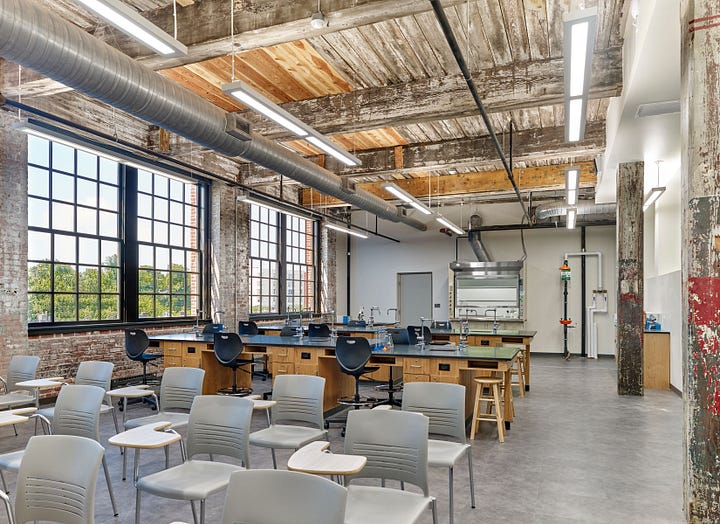

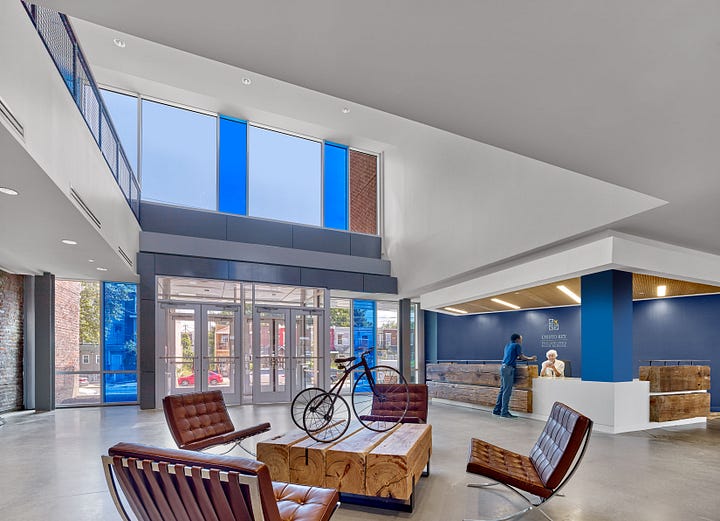
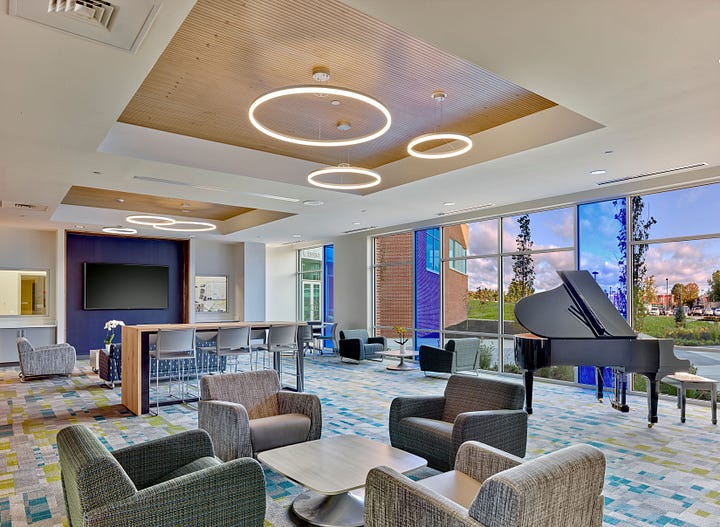
“The objective was to design a place that could serve as a true home for Cristo Rey’s students,” added Crawford’s design partner, Carmen Bushong. “We wanted it to be a place where everyone could leave their emotional worries behind and walk with lightheartedness. And from the get go, the goal was to make this building integral to the neighborhood, so that everyone around here genuinely felt like it belonged to them as well.”
For Crawford, however, the nexus of spirit and design was its new sanctuary space. “There are few things these days that are intricately detailed,” she began, “but in that space, from the benches to the altars to the stained glass -- which was adapted from a watercolor one of the nuns had done -- everything was intentional, in the most beautiful way. It’s centrally located over the entrance, with floor-to-ceiling windows, so that when students come in there they have a view of the entire city. And because it’s elevated, they are literally rising above it all, and viewing their future.”
Like all of Cristo Rey’s students, Aaron Stills-Todd had a view of his future that was equally lofty. “My mom raised me by herself,” he explained. “She was determined that I secure a brighter future, and she surrounded me with positivity through each phase of my life. She was a mother and father to me at the same time, and she always wanted me to stay out of the bad neighborhoods, and get involved in good things.”
He’d first heard about Cristo Rey from a student ”who talked about his work experience, and how the school was letting him get his foot in the door in all these different places, and how it was really jump-starting his career. Even when he was applying to fast food jobs he felt overqualified. It just really made the school pop out to me.”
After being accepted, Aaron quickly made himself at home. He joined the track team, the basketball team, the Black Student Union, and the Robotics club. And all the while, he kept searching for the key ingredients of a passion that could shape his ideal future.
“And then I ended up at Blackney Hayes,” Aaron marveled -- “the firm that designed my school in the first place.”
Assigned to work under Carmen Bushong, Aaron was immediately tasked with working directly on the redesign of his school. He did research on the original building. He designed a performing arts theater. And slowly, he realized his apprenticeship was more than just a job -- it was a calling. “I learned that I’m a designer at heart,” he said recently. “And now, with my college degree in reach, I can proudly say that my first job as an adult will be back at the firm that gave me direction and made me realize I wasn’t in love with the idea of creating ‘things;’ I was in love with the people those things were designed to help.”
For John McConnell, stories like Aaron’s underscore what makes his school such a special place. “At Cristo Rey, we stake our reputation on our ability to get young men and women into college. What truly defines us, however, is not college; it’s cura personalis, a Jesuit concept that reminds us we must always pay attention to the care of the whole person.
“Amidst the rapidly changing landscape of the modern world, and against the backdrop of an increasingly separate and unequal modern society, this campus is a chance for us to answer that calling, by revisiting what it means to fully prepare young people for their future -- as opposed to our past.
“That’s what we’ve built here. And nothing could make me more proud.”





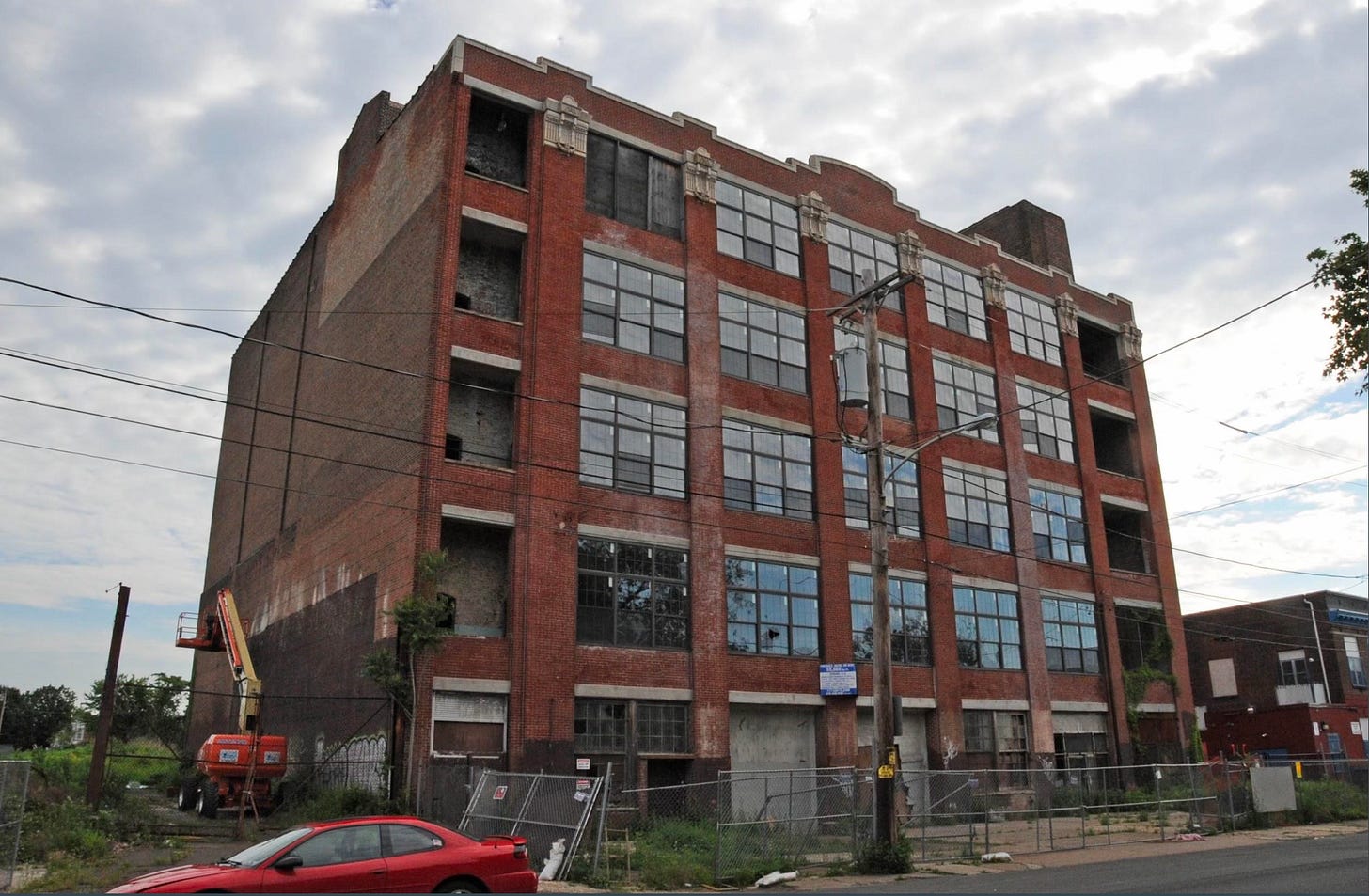
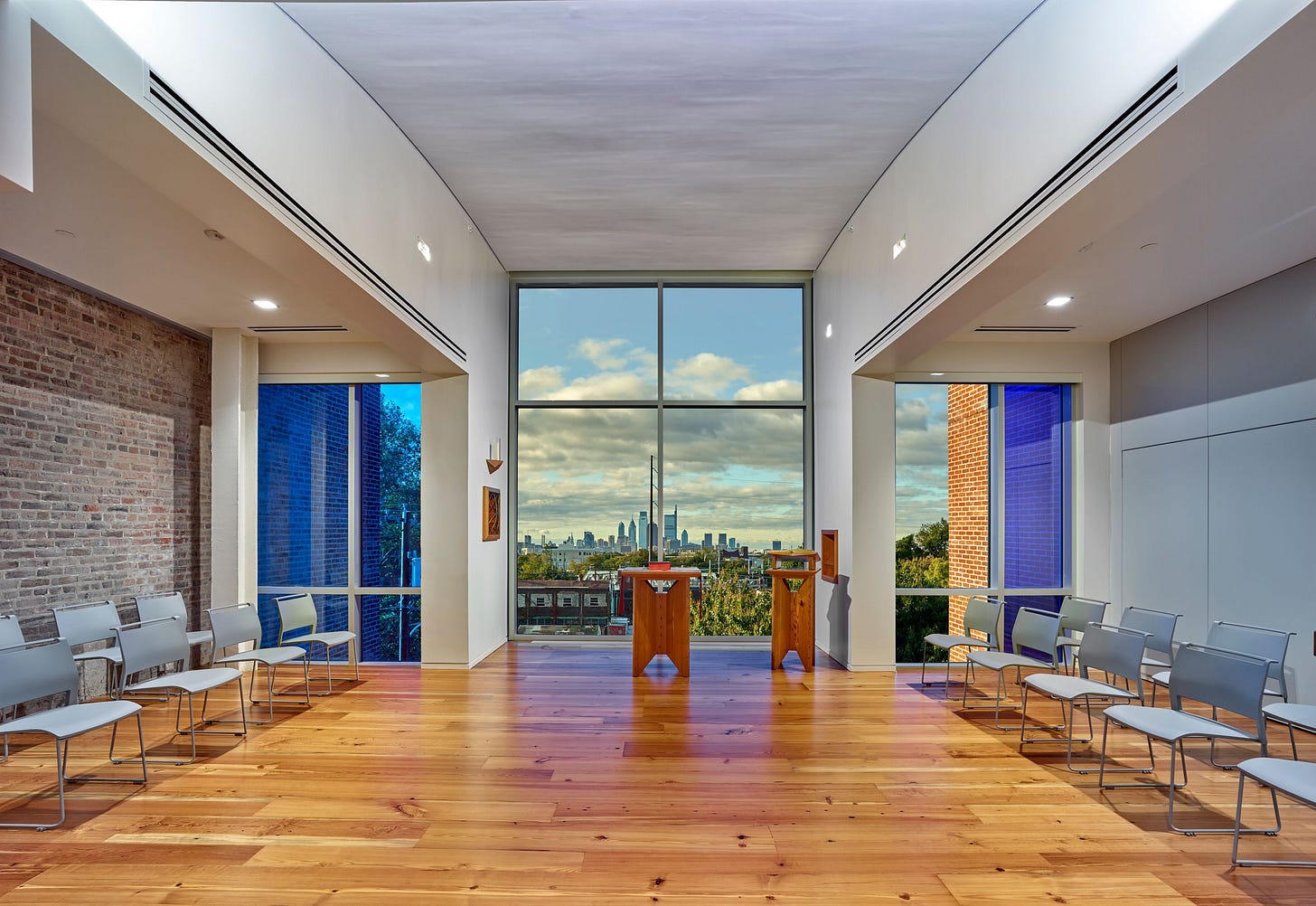
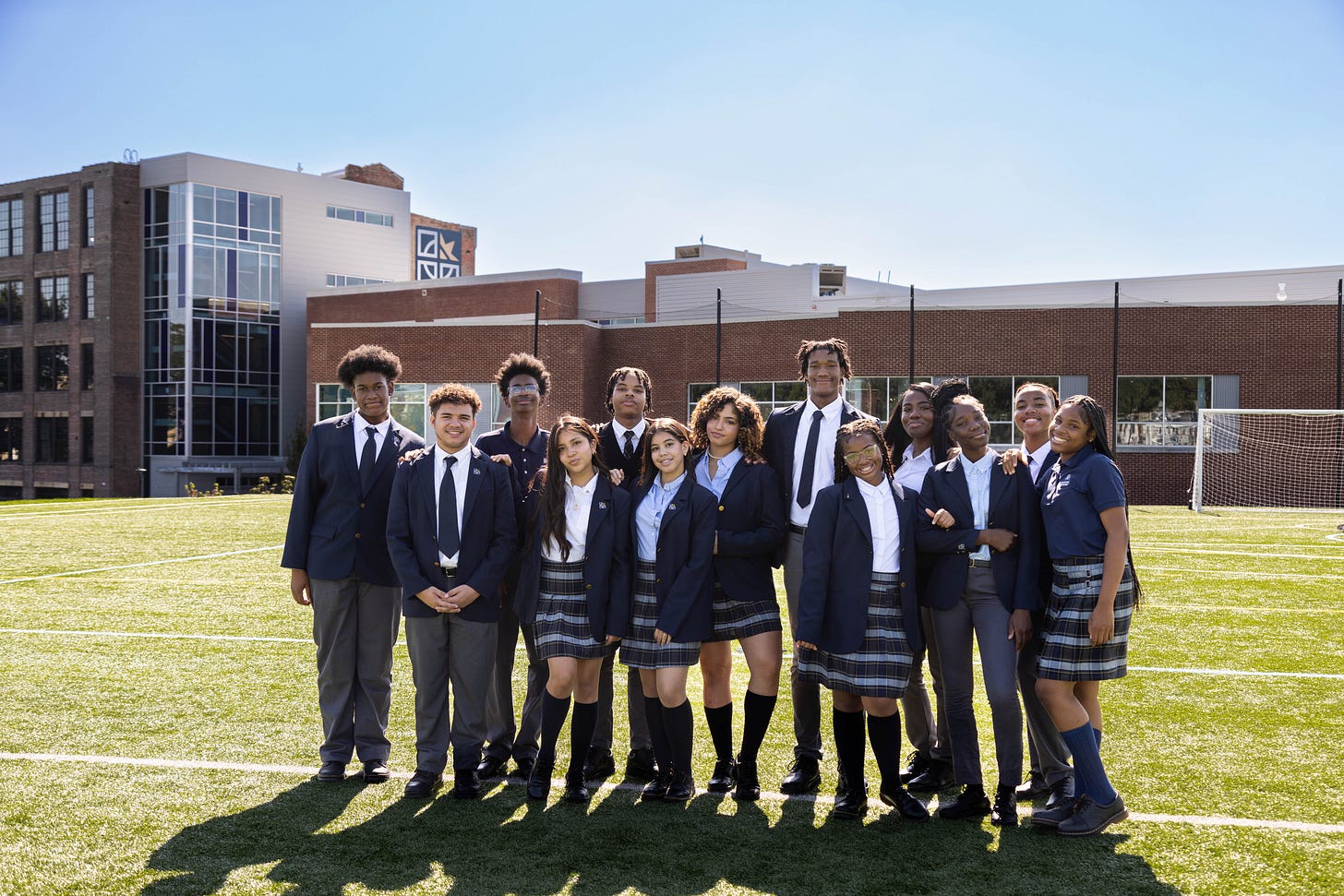
It seems my sabbatical is giving me ample chance to catch up on email and actually read regularly your postings. I look forward to our chat later in the fall. Re: Rey, that is, Christo Rey, a few quick comments: I have visited several Christo Rey schools and think it is an inspired model. We provided a grant to the NYC Christo Rey almost a decade ago and in the context of my due diligence, I visited and spoke with the students. Their internships helped fund the program, yes (I do have a question about that and the funding model that we can discuss when we meet if we both can remember to do so) but it also experientially opened worlds of professional employment to these students who came to understand that they could aspire to that and so much more. I was impressed and continue to admire this network of schools.
it’s cura personalis, what all schools should be, but without the hint of heavy conformance. Where did the funding come from?